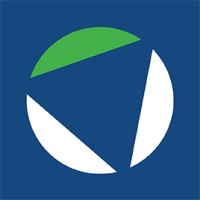 Back
Back
Sit tight, modern APIs will soon take banks on a fast ride
The world of banking today is like a race car on the grid preparing for the inevitable green light. There is a lot of noise before the ‘go’ signal; from the vehicles revving their engines, pundits in commentary boxes speculating on the race outcome, and spectators cheering on favourites from the grandstands. When the chequered flag drops and the race begins, a plume of dust and smoke is left behind as the vehicles speed off across the track. The winner is yet to be decided…
In banking, the race is just starting. Amidst the noise, speculation and fanfare, success in this industry will come down to one key thing: open APIs. Those that can harness them correctly will take the top spot on the podium.
Shifting up a gear
Modernisation in retail banking is largely being driven by customers, who have come to expect a level of digitalisation consistent with what they experience in other areas of their lives. Simply compare well-known consumer tech innovations such as the Amazon Echo, or Google’s impressive AI-enabled search function, to understand why people expect more from those who handle their money.
This is not to say banks have neglected innovation. Flashier, more convenient services for customers have been introduced. But in the face of ongoing political, legacy, technological, competitive and regulatory challenges, the ‘from scratch’ development of advanced Google or Amazon-style services remains an uphill struggle.
Even in light of the recent technological advancements permitted by open banking, the issues outlined above have prevented many banks from properly grasping the opportunities of technology and the disintermediation of data.
Opening the throttle
Open banking is accelerating the banking industry into the future, with APIs acting as the fuel to power the innovation ahead. But successful development and implementation of API-based technology is a long-winded and costly task for banks to undertake alone. To combat this, some banks have started acquiring fintech businesses to quickly bolster their own service offerings. However, for maximum benefit, industry-wide collaboration around innovation is needed.
This will require banks to shift from a historically closed-off, competitive mentality, to recognising the advantages of pooling knowledge and raising standards of industry innovation together. BIAN, the organisation that I am proud to head up, has spent a decade promoting this ideology. Our global organisation brings together some of the biggest, most innovative banks and technology vendors, to build a common IT architecture or ‘how-to guide’ to streamline the inevitable move to modern, high-quality, and customer oriented services.
A large part of how to create a modern IT architecture for banks involves utilising a library of definitions for popular APIs, to avoid unnecessary duplication of time, money and effort. BIAN’s current banking architecture contains 26 new API definitions, including ones that instruct banks how to build automated customer on-boarding processes. These API definitions comply with the SWIFT ISO20022 open banking standardisation approach, making them universally compatible.
Miles ahead
Adopting a common IT framework would allow the banking industry to launch services faster, and better meet customer demands for smarter and more transparent services. As time goes on, more complex API functionalities will be built, allowing banks to not just incorporate more exciting services into their offering (e.g. WhatsApp payment), but also establish novel ways to maximise new and previously untapped revenue streams. Naturally, modern and streamlined services can reduce operational costs by eliminating outdated back and middle-office processes.
Looking ahead, the next phase of API development will focus on ‘micro-services’ – that is, API first banking capabilities which run independently from core banking systems. Microservices will provision banks to facilitate a “pick-and-mix” approach to their offerings, allowing them to be more aligned to their customer base. In time, such a model could renew the core banking system and change the banking IT function forever.
First place
The introduction of a common IT framework will be of massive benefit to the banking industry, helping major players to address customers’ demands for modern banking solutions in a more effective manner. As the introduction of higher standards for global banking services grows, the industry will eventually move away from competing on service offerings to competing on brand value. Like we have seen in the retail industry, the winners in banking will be those that provide the right mix of innovative offerings as well as premium customer service.
By Hans Tesselaar, Executive Director at BIAN
IBSi News
Get the IBSi FinTech Journal India Edition
- Insightful Financial Technology News Analysis
- Leadership Interviews from the Indian FinTech Ecosystem
- Expert Perspectives from the Executive Team
- Snapshots of Industry Deals, Events & Insights
- An India FinTech Case Study
- Monthly issues of the iconic global IBSi FinTech Journal
- Attend a webinar hosted by the magazine once during your subscription period
₹200 ₹99*/month
* Discounted Offer for a Limited Period on a 12-month Subscription
IBSi FinTech Journal

- Most trusted FinTech journal since 1991
- Digital monthly issue
- 60+ pages of research, analysis, interviews, opinions, and rankings
- Global coverage
Other Related Blogs
June 27, 2025
Intelligent payment orchestration – why 2025 is an inflection point for banks in Europe
Read MoreRelated Reports

Sales League Table Report 2025
Know More
Global Digital Banking Vendor & Landscape Report Q2 2025
Know More
NextGen WealthTech: The Trends To Shape The Future Q4 2023
Know More
Intelligent Document Processing in Financial Services Q2 2025
Know More


